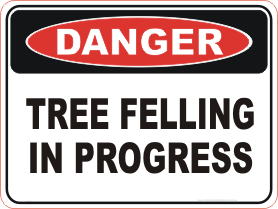Tree Felling The Correct Procedure

Tree Felling is an important part of the logging process and requires specific skills, knowledge and experience to carry out safely. A single mistake can cause serious property damage or injury/death to the feller or bystanders. The correct procedure is a multi-step process that starts with assessing the tree and examining the surrounding area. This is important as it helps determine the most desirable direction for a tree to fall. It also helps identify any obstacles/risks such as powerlines, buildings, other trees, roads or fences that need to be avoided during the felling process.
Once the desired landing area is established, the feller will then make a series of cuts in the tree to create what is known as a “notch” that acts as a hinge and encourages the tree to fall in the direction desired. This process will take into account the natural lean of the tree, wind direction and any other influencing factors.
When making the notch, it is important that the feller is not standing too close to the tree as this could increase the risk of an uncontrolled release. It is recommended that the feller stand back from the ax handle by about 3 feet when cutting. This will allow them to keep one eye on the ax handle and the other on where they want the tree to land.
Once the notch has been created, the next step is to create a back cut that will be parallel to the apex of the notch and even with it on both sides. This will help to ensure that the remaining hinge will be able to resist the downward pressure of the falling tree. The feller must be very careful to follow the line of the apex and not cut into or through any roots.
The final step in the felling process is to release the ax grip and walk away along one of the escape routes, keeping an eye on the tree. It is highly recommended that the feller have a second person standing a few feet behind them who can tap the feller on the shoulder to let them know when the tree is beginning to fall. This will give the feller an opportunity to get out of the way before it is too late.
Safety is the most important factor when felling a tree and it is essential that the feller has a full complement of safety gear. This should include a hard hat, chainsaw gloves and eye protection. It is also a good idea to have an assistant watching the tree and tapping on the faller to let them know when it’s time to leave the work area. Having an assistant stand in front of the tree can also help to prevent a domino effect if the tree falls into another tree or structure. This is especially important if the tree is being felled on steep terrain.
Article Source : petestreeworxwa2.wordpress....